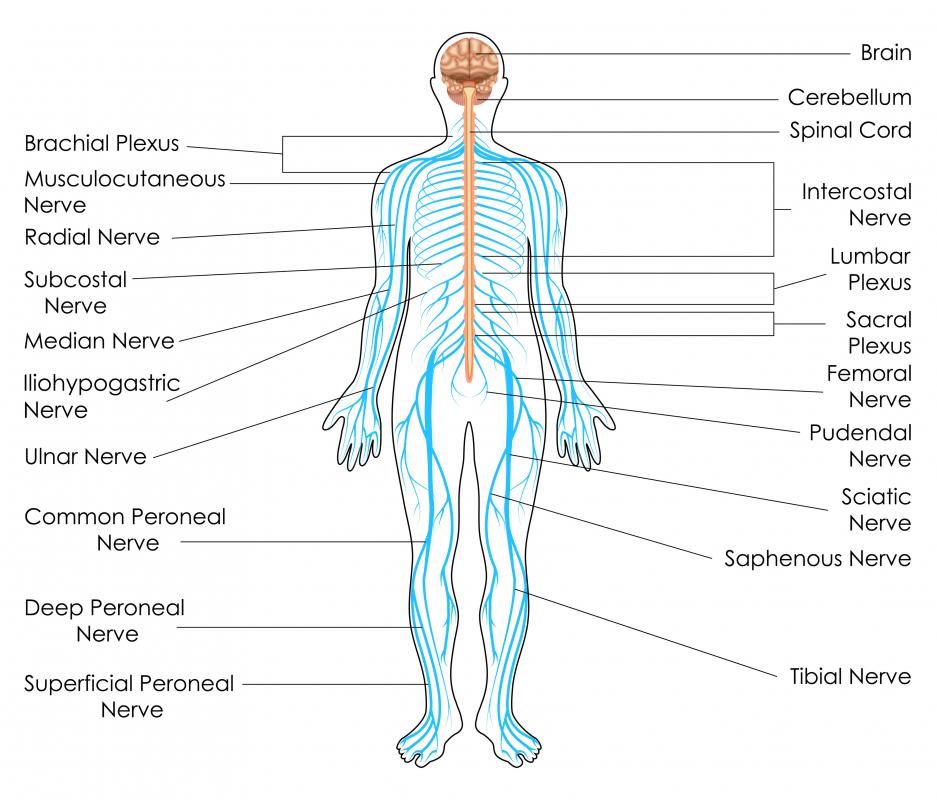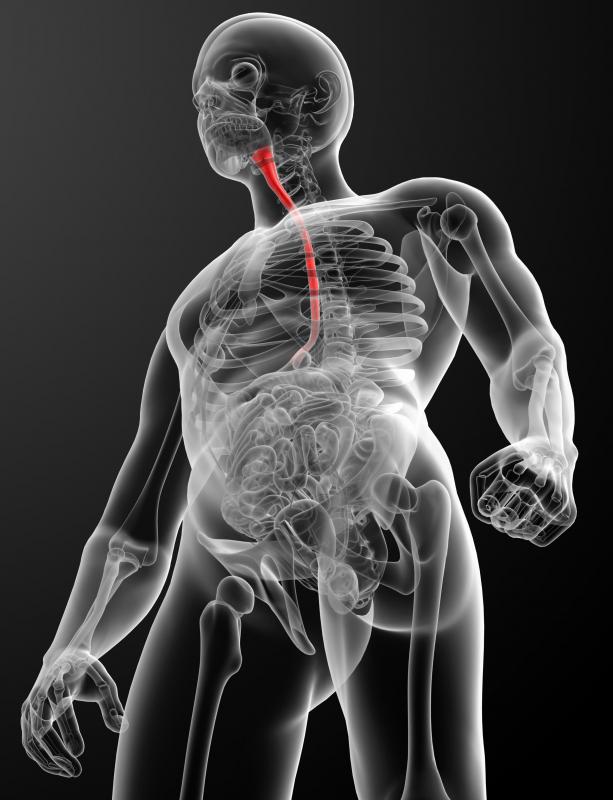At WiseGEEK, we're committed to delivering accurate, trustworthy information. Our expert-authored content is rigorously fact-checked and sourced from credible authorities. Discover how we uphold the highest standards in providing you with reliable knowledge.
What Is the Auerbach's Plexus?
Auerbach's plexus is a collection of autonomic nerve fibers and cells that are mainly found in the muscle tissues of the human intestine. It is also known as the myenteric plexus, named for its location; myo means "muscle" while enteron means "gut." It is part of the enteric nervous system, which is the part of the autonomic nervous system that oversees the gastrointestinal tract. The latter primarily consists of the intestine and the stomach.
The origin of Auerbach's plexus is the medula oblongata, which is a collection of cells from the lower part of the brain stem. The vagus, or the tenth of the 12 cranial nerves that directly emerge from the brain, carry the bundle to its location. Auerbach's plexus can also be found in the muscles of the stomach as well as the esophagus, through which food and drink pass to reach the stomach.

More specifically, Auerbach's plexus is situated between the circular and longitudinal layers of the muscular coat, which is sometimes referred to as the muscularis propria or the muscularis externa. It is responsible for regulating gastrointestinal tract motility, which means that the components of the gastrointestinal system must be able to move spontaneously, independently and actively. It is also the gastrointestinal tract's chief nerve supply.

Therefore, Auerbach's plexus is clinically significant in that it has been linked to achalasia. This condition occurs when there is a lack of motility. The smooth muscles affected in this disorder are those of the esophagus and the cardia, which is the part of the stomach to which the esophagus is attached; the latter anatomical part is also known as the lower esophageal sphincter (LES). People suffering from achalasia have difficulty swallowing food and drink, and have the tendency to regurgitate, or expel food from the esophagus. Currently, there is no known cause for achalasia.

Auerbach's plexus is named after 19th century German anatomist and neuropathologist Leopold Auerbach, who is credited with being the first to describe the myenteric plexus. An associate professor of neuropathology at the University of Breslau in what is now known as the major south-western Polish city of Wrocław, Auerbach also discovered a disease that denotes an overgrowth of the ears, facial features and tongue called Friedreich-Auerbach disease. He shares credit for the discovery of the latter with fellow German pathologist and neurologist Nikolaus Friedreich.
AS FEATURED ON:
AS FEATURED ON:
















Discuss this Article
Post your comments